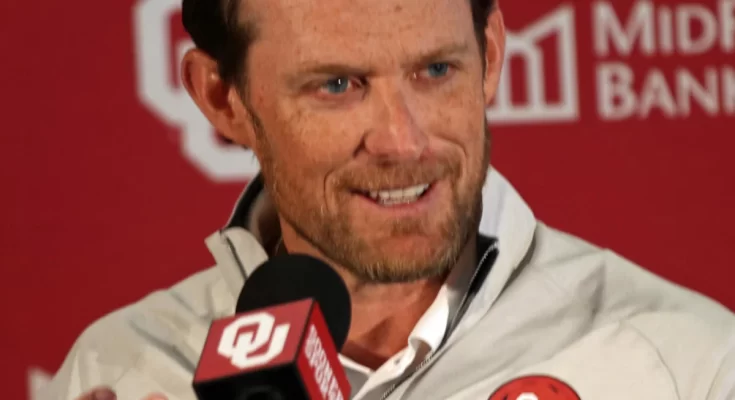The Oklahoma University Approach: Value, Development, and Sustainable Growth Over Overspending on Five-Star Recruits
Jim Nagy, the general manager of Oklahoma University athletics, has taken a distinct and thoughtful approach to building and maintaining the university’s sports programs. At a time when college athletics is increasingly characterized by extravagant spending on high-profile five-star recruits, Nagy’s strategy prioritizes long-term value, player development, and sustainable growth. This philosophy stands in contrast to the prevailing trends in collegiate sports and offers a compelling blueprint for success that balances competitiveness with fiscal responsibility and ethical stewardship.
The recruiting landscape in college sports has transformed dramatically over the past decade. The rise of recruiting services, digital scouting, and extensive media coverage has put a spotlight on the so-called “five-star” athletes—those top-tier high school players deemed elite prospects destined to make an immediate impact at the collegiate level. Programs often compete fiercely for these athletes, engaging in costly recruiting battles, offering lavish perks, and sometimes even risking regulatory scrutiny to land the next superstar.
This competition has led many universities to focus heavily on chasing these high-profile recruits, sometimes at the expense of program balance, budget stability, and the broader development of their athletes. The pressure to secure blue-chip talent has pushed some programs into financial overspending and has, in certain cases, created unsustainable models that prioritize short-term gains over long-term program health.
Against this backdrop, Jim Nagy and the leadership at Oklahoma University have chosen a different path. They have embraced a philosophy centered on value, development, and sustainable growth—principles that not only ensure the financial health of the program but also foster a culture of continuous improvement and resilience.
Prioritizing Value Over Star Power
Nagy believes that the best use of resources in collegiate sports is not necessarily to chase every five-star recruit aggressively but to identify value where it exists. This means looking beyond the star ratings and highlight reels to find players who may be overlooked by other programs but have the potential to grow and contribute meaningfully to the team.
The concept of value is multifaceted. It includes:
- Cost Efficiency: Ensuring that scholarship offers and recruiting resources are allocated wisely so that the program does not overextend itself financially.
- Fit: Finding athletes whose skills, work ethic, and character align with the team’s culture and system.
- Potential: Identifying players who may develop significantly with proper coaching and training, rather than just focusing on raw talent as measured in high school.
Nagy and his staff utilize advanced analytics, in-person evaluations, and comprehensive background checks to assess recruits holistically. They recognize that a player’s success at the collegiate level depends not just on physical talent but also on mental toughness, coachability, and the ability to adapt to a team environment.
By focusing on value, Oklahoma can build rosters that are deep, balanced, and aligned with the program’s identity. This reduces the risk of investing heavily in one or two highly touted recruits who might not pan out, while ignoring the broader needs of the team.
Developing Talent Internally
Perhaps the most critical aspect of Nagy’s strategy is a steadfast commitment to player development. Oklahoma invests heavily in coaching, facilities, and support services that enable athletes to reach their full potential once they arrive on campus. This approach underscores the belief that recruiting is only the first step in a multi-year process of cultivating talent.
The university’s development philosophy includes:
- Personalized Training Programs: Tailoring strength and conditioning, nutrition, and skills training to each athlete’s needs.
- Mental and Emotional Support: Providing access to sports psychologists, academic tutors, and life skills coaching to help players manage the demands of college athletics.
- Incremental Skill Growth: Designing practice plans that emphasize gradual improvement in technique, decision-making, and game awareness.
- Leadership Development: Encouraging athletes to grow as leaders on and off the field, contributing to a strong team culture.
By focusing on development, Oklahoma maximizes the potential of every recruit, regardless of their star rating coming out of high school. This model has proven successful over time, as many “under the radar” players blossom into key contributors and leaders. It also builds program continuity, as players become more skilled and experienced over their collegiate careers.
Sustainable Growth: Building for the Future
Overspending on five-star recruits can create an unsustainable boom-and-bust cycle. A program may enjoy a few seasons of high success, buoyed by a collection of elite talent, only to suffer a decline once those players graduate or move on. The costs associated with recruiting and retaining such athletes can strain budgets and create pressure to constantly win at any cost.
In contrast, Nagy’s vision emphasizes sustainable growth—developing a program that can maintain competitive excellence year after year without jeopardizing its financial or institutional integrity. This includes:
- Budget Discipline: Keeping recruiting and operational costs within realistic bounds, ensuring the program can thrive even during lean years.
- Recruiting Depth: Building rosters with a mix of talent levels so the team is never overly reliant on a handful of stars.
- Strong Coaching Staff: Investing in coaches who can develop talent consistently and adapt to changing circumstances.
- Alumni and Community Engagement: Cultivating strong relationships with alumni, donors, and fans to secure ongoing support.
Sustainable growth requires patience and long-term planning. It means accepting that not every recruiting class will produce immediate impact players but trusting that the program’s culture and development systems will create success over time.
Cultural Alignment and Team Chemistry
One of the less tangible but equally important factors Nagy stresses is the alignment of recruits with Oklahoma’s culture and values. Building a winning team is about more than just physical talent; it’s about assembling players who fit the program’s ethos and contribute positively to team chemistry.
Nagy and his team conduct extensive interviews and evaluations to assess character, leadership potential, and work ethic. They seek players who are motivated not only by personal glory but by a commitment to team success and personal growth. This culture-first approach helps reduce conflicts, fosters a supportive environment, and enhances on-field performance.
Avoiding the Pitfalls of Overspending
Overspending on top recruits can lead to a variety of issues:
- Financial Strain: Excessive spending on recruitment efforts, scholarships, and perks can burden the athletic department and the university’s broader budget.
- Pressure and Unrealistic Expectations: High-profile recruits often come with intense pressure to perform immediately, which can lead to stress and burnout.
- Team Imbalance: Concentrating resources on a few stars can leave other roster spots underdeveloped, leading to gaps in depth.
- Short-Term Focus: Programs might prioritize immediate wins over building a lasting foundation, resulting in volatile performance cycles.
By emphasizing value, development, and sustainability, Oklahoma avoids these pitfalls, creating a stable program built on solid foundations.
Case Studies: Success Stories at Oklahoma
Oklahoma’s approach under Jim Nagy has yielded numerous success stories, with players initially rated lower by recruiting services developing into key contributors or even NFL prospects. These examples demonstrate the power of a development-first model:
- Player A: A three-star recruit who, through dedicated coaching and training, became a starter by sophomore year and was later drafted into the professional leagues.
- Player B: A walk-on athlete who earned a scholarship and leadership role by embodying the program’s work ethic and culture.
- Player C: An overlooked position player who, with tailored development, transformed into a defensive cornerstone.
These stories illustrate how prioritizing development and sustainable growth can create a winning program without the constant chase for five-star talent.
The Broader Implications for College Athletics
Jim Nagy’s philosophy at Oklahoma University offers valuable lessons for college athletics nationwide. As programs face increasing scrutiny over spending, recruiting practices, and athlete welfare, the need for balanced, ethical, and sustainable strategies becomes more urgent.
Nagy’s model shows that:
- Success is not solely dependent on star recruits: With the right culture and development system, programs can build competitive teams from diverse talent pools.
- Fiscal responsibility is crucial: Managing budgets prudently ensures programs remain viable and respected within their institutions.
- Athlete development should be holistic: Supporting athletes physically, mentally, and academically produces well-rounded individuals prepared for life beyond sports.
- Long-term planning pays off: Sustainable growth builds enduring programs rather than fleeting success.
This approach can inspire other universities to rethink their recruiting priorities and focus on building strong, resilient programs that benefit athletes, coaches, and communities alike.
Jim Nagy’s leadership at Oklahoma University embodies a thoughtful, principled approach to college sports—a sharp contrast to the “win at all costs” mentality that sometimes dominates. By emphasizing value in recruiting, investing deeply in athlete development, and committing to sustainable growth, Oklahoma has positioned itself as a model for how to succeed in the evolving landscape of collegiate athletics.
In an era marked by rising costs, intense competition, and growing ethical concerns, Nagy’s vision offers a clear and compelling path forward. It’s a reminder that true success in college sports is not measured solely by star power or immediate results but by the strength, integrity, and resilience of the entire program.



